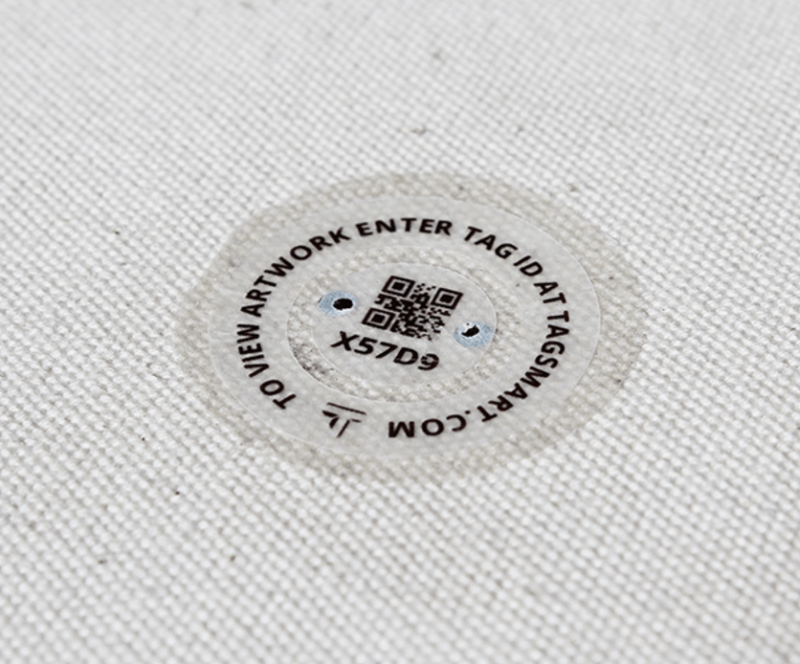Over the past several years, institutions in both the US and the UK have been trying to figure out how to use DNA to solve the art world’s forgery problem. The objective: to develop a tamper-proof label or tag with a unique DNA signature that artists can apply to their work before it leaves the studio.
Now, the London-based startup Tagsmart has become the first to cross the finish line and put a product on the market. Last month, the joint venture between leading frame maker Mark Darbyshire and software developer Steve Cooke launched its first synthetic DNA tag for canvas. (The company previously launched tags for paper and aluminum—but since painting is both the most expensive and most-faked medium, the new product is likely to become its signature.)
The tags, which range from 32–38 mm in size, are backed up by a digital database and a certificate of authenticity generator. While the primary purpose of the label is to forensically authenticate an artwork, the little sticker also contains a digitally accessible provenance record to guard against theft.
The GLP aggregated and excerpted this blog/article to reflect the diversity of news, opinion, and analysis. Read full, original: Injecting Your Painting With Synthetic DNA Could End Art Forgery as We Know It































